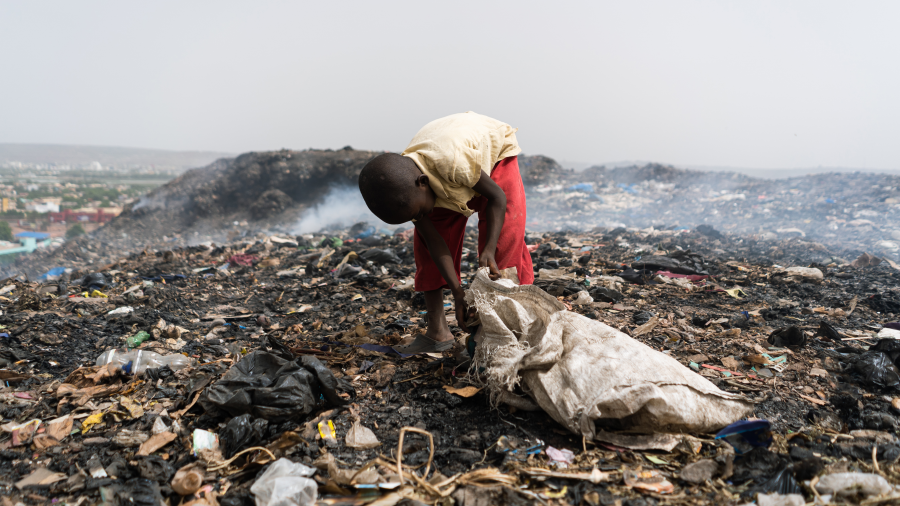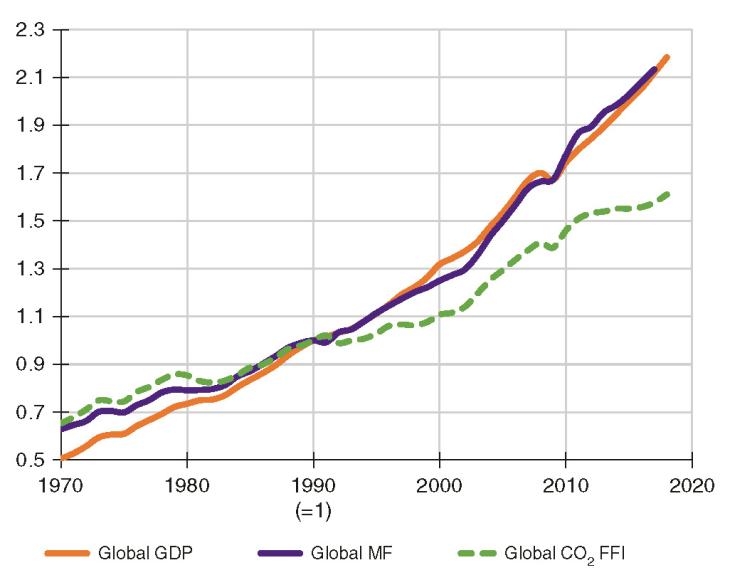
A downloadable version of this lesson is available here:
When it comes to problems found at the intersection of people and nature, two fundamental concepts are that 1) science alone cannot address such problems and 2) no one solution to these issues exists. Understanding these concepts is especially important for new learners from the ecological or physical sciences because they tend to think first about scientific evidence and technological solutions. For example, when asked what information is needed to solve issues of water security, some learners may be quick to say the rainfall, vegetation, and soil characteristics of the region under study. While these are important components, they are not sufficient since water security is closely tied to social issues (Gomez-Jaramillo et al. 2024). Learners need to begin asking questions like: How are people using the water? Who has access to the water and is access related to scarcity? How are policies set on water use and who determines those policies? Put simply, water problems are quite often tied to economic, inequality, and allocation issues (Yoon et al. 2021; Valero et al. 2023). They also have ties to pollution and sanitation.
There being no one solution to socio-environmental problems is a prime reason they belong to a class of problems that are “wicked.” Rittel and Webber first coined this term to describe “a class of problems that are complex, contentious, defy complete definition and resolution, and for which there is no single solution, since any resolution generates further issues” (Rittel & Webber 1973, p. 4). For issues like water security, pollution, deforestation, and vector-borne diseases, people tend to have different views on what those issues entail and how to address their associated problems. Additionally, there are an array of biophysical and social factors that interact to cause the problem, and there is typically inadequate data to inform potential solutions. Also, each of these problems is associated with a common pool resource—a natural resource available for all people to share, such as clean air, water, and forests.
This lesson first seeks to challenge learners to accept that all environmental problems are social in their origin and/or consequences—in fact, many problems are both environmental and social. Second, the lesson introduces the concept of wicked problems with the goal of building understanding of the importance of individual perspectives and values in identifying, defining, and attempting to solve socio-environmental problems. This second part of the lesson uses a case study and asks learners to consider who benefits from and who is hurt by human decisions and actions.
- Understand that environmental problems stem from or cause social problems.
- Share views on natural resource problems and consider different perspectives.
- Consider different types of wicked problems.
- Explore the issue of water security along axes.
(5 min.) Ask the learners to view the image in which a young boy is picking through a garbage dump (image is at top of lesson and on the title slide of the Power Point for this lesson). Ask them what they see in the image, what the problem(s) is, and what the causes are.
This is a two-part, 50-min. lesson.
Part I. Environmental Problems Are Social – The first part of the lesson provides learners with examples that should help them see that social causes or consequences are associated with environmental problems.
- (5 min.) Show the graph (Figure 1 below and in slide 1). You may need to first query the learners on what gross domestic product (GDP) is and why it continues to go up globally. They should be aware that CO2 has been rising steadily, but they will likely not know what “material flows” (MF) means; thus, it is defined on the slides. Ask learners:
- Why are GDP, CO2 emissions, and raw-material use related statistically?
- Is technology solving the problem of high emissions (climate change)?
- What might weaken the relationship? I.e., given the figure, what policies might reduce global CO2 from fossil fuel use?
Answer to #1: The more affluent people are, the more they consume, and this results in more burning of fossil fuels. In fact, consumption and population size are among the greatest indicators of environmental impact. And research has shown that technological advances to reduce environmental impacts have fallen way behind the effects of consumption (Haberl et al. 2020). I.e., we aren’t just solving environmental problems with new inventions, even though they do help. Wiedmann et al. (2020) argue that lifestyle changes are needed but are inhibited by economic structures that seek growth, i.e., higher GDP or Gross Domestic Product, which is a measure of economic output of goods and services. GDP has continued to grow and will do so more dramatically as lower-income groups move up economically. In short, consumption and affluence are growing. Quote from Wiedeman: “Consumption is by far the strongest determinant of global impacts, dwarfing other socioeconomic-demographic factors such as age, household size, qualification, or dwelling structure.” Material Flows (MF) measures the amounts of materials (e.g., coal, crops, metals, etc.) that are used; CO2 FFI – Carbon Dioxide produced by the Fossil Fuel Industry).
- (5 min) Show the red map (left only in Figure 2; also, on PowerPoint slide 2). Let them know the maps of extreme heat are based on data from the city of Baltimore, MD. Ask learners:
- What factors may help predict the distribution of extreme heat in downtown Baltimore?
- Now show the full figure (slide 3) that also includes the green map and ask why income level shows strong overlap with temperature?
- What other factors may explain the relationship?
Answer to #2: The difference in temperature can be up to 10 degrees, which has caused very serious health problems. Certainly, the amount of impervious cover (urban heat-island effect) is important. Income level also helps explain the relationship, but not fully—and certainly not in the boot-like part of the city map. Other critical explanatory factors include: fewer city parks and city tress along roads, race (for a map, see DeClercq et al. 2023) and historical “redlining.” (By 1937, regions were labeled as “hazardous,” and many realtors encouraged white people to look elsewhere.)
- (5 min.) Show the U.S. map of households without water (Figure 3 below and PowerPoint slide 4). Tell learners that they can ignore the orange circles. (These are regions with higher levels of uncertainty in the underlying data). Ask learners:
- Can you speculate on the drivers and consequence of the patterns?
- Now show the figure with data on household characteristics next to it (slide 5) and ask: How many of these factors were part of their answer?
Part II. Socio-Environmental Problems are Wicked – This second part of the lesson uses a case study approach to introduce the concept that potential solutions to problems are value-laden, require social change, and may benefit some while harming others.
- (10 min.) Show the following video (8.5 min.) and then ask the learners to answer the three questions in a paragraph. A link to the video is also in slide 6.
- What is the problem? Describe it.
- Who is it a problem for?
- Can the problem be solved? How?
- (12 min.) Have the learners read the abstract to the following paper, "Socio-ecological analysis of eutrophication in the Chesapeake Bay," (also on slides 7-8) (Ollivier et al. 2023). Prior to reading it and as needed, discuss the terms that may be new to the learners: social actor, stakeholder, ecosystem services, environmental justice, and others.
- Have the learners answer the same questions as those listed for the video in #1 above.
- Explore with them if/how their answers changed.
3. (8 min.) Show PowerPoint slides 9–10 to introduce the definition of wicked problems. Have learners identify which of the problems listed are wicked and which are tame. Time-permitting, have learners discuss as many of the other lesson’s socio-environmental problems (e.g., urban heat, lack of piped water) as possible and what makes them wicked.
-
Teaching “wicked” problems in geography
This is a very useful article because it discusses the competences students need to tackle wicked problems. It discusses uncertainty, interdisciplinarity, and the challenges in grappling with undefined issues and highly divergent views. It also introduces other related articles in a special issue of the journal.
Simm, D., Marvell, A., and Mellor, A. 2021. Teaching “wicked” problems in geography. Journal of Geography in Higher Education, 45(4), 479-490. https://doi.org/10.1080/03098265.2021.1956883
-
Water security in a changing environment: Concept, challenges and solutions
For those who are unfamiliar with the many dimensions of water security, this article provides an overview of water security including its many dimensions and causes. It discusses these in the context of global change and suggests sustainable solutions.
Mishra, B.K., Kumar, P., Saraswat, C., Chakraborty, S. and Gautam, A., 2021. Water security in a changing environment: Concept, challenges and solutions. Water, 13(4), p.490. https://doi.org/10.3390/w13040490
-
Violent silence: framing out social causes of climate-related crises
In this sophisticated article by Jesse Ribot, he explains why common scientific or engineering approaches to solving complex problems ignore the underlying causality that is associated with human responsibility and actions. He uses the example of climate change to elegantly explain why such approaches “cloud-out and silence” the social, political, and economic causes. This explanation enriches the instructor's understanding of the issues in this lesson and would be great to assign to postdoctoral (and above) learners.
Ribot, J., 2023. Violent silence: framing out social causes of climate-related crises. In Climate Change and Critical Agrarian Studies (pp. 60-89). Routledge. https://doi.org/10.1080/03066150.2022.2069016


